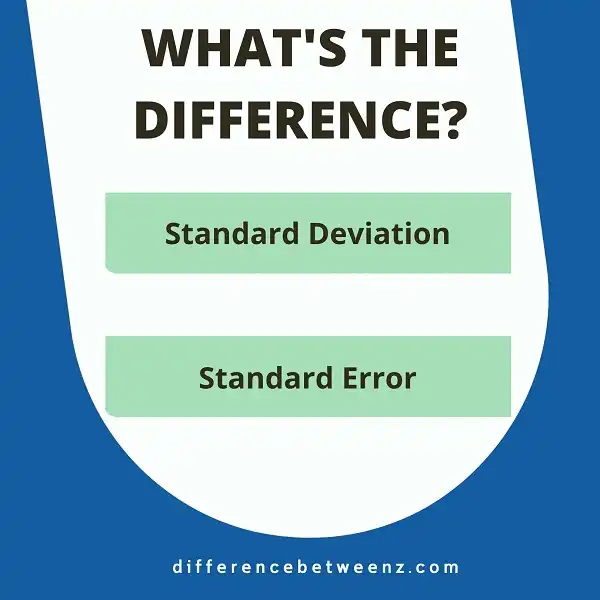Standard deviation and standard error are two different but related measures of variability. Standard deviation is a measure of the variation in a set of data, while standard error is a measure of the precision of that data. In this blog post, we’ll explore the difference between these two measures and discuss how they can be used to improve your data analysis.
What is Standard Deviation?
A standard deviation is a statistical tool that measures the dispersion of data points around the mean. In other words, it helps to identify how far away each data point is from the average. Standard deviation is usually abbreviated as “s” or “σ.” To calculate the standard deviation, you first need to find the mean.
- This is done by adding up all of the data points and then dividing by the number of data points. Next, you will take each individual data point and subtract the mean. Finally, you will square this number and then take the average of all of these squared numbers.
- The Standard Deviation formula can be stated as: σ = √((Σ(x-μ)^2)/n). A standard deviation is a valuable tool because it allows you to see how much variation there is in your data.
- It can also be used to compare different sets of data and to track changes over time. Standard deviation is an important concept in statistics and data analysis, so it is essential to understand how it works.
What is Standard Error?
Standard Error is a statistical measurement that calculates the variability of a data set within its own population. Standard Error is used to estimate the Standard Deviation of a population when only a sample of that population is available. Standard Error is also used to construct Confidence Intervals around an estimate, which give a range of values that are likely to contain the true population value. Standard Error can be calculated for any type of data, and is particularly useful for data that is not normally distributed. Standard Error can be estimated using different methods, depending on the type of data and the desired level of precision.
Difference between Standard Deviation and Standard Error
- Standard Deviation is a measure of how spread out numbers are. Standard Error is a measure of how accurate a Standard Deviation is. Standard Deviation tells us how much the numbers vary from the mean. Standard Error tells us how close we are to the real Standard Deviation.
- The Standard Error is always smaller than the Standard Deviation. The Standard Error gets smaller as the sample size gets bigger. When we take a sample, we are usually interested in how accurate our estimates are. Standard Error gives us a way to measure that.
- It is important to remember that the Standard Deviation and Standard Error are not the same thing, even though they both measures of variability. The Standard Deviation is a property of the entire population, while the Standard Error only describes variability within a sample. Thanks for reading! I hope this helped clear up any confusion about these two important statistical measures.
Conclusion
In conclusion, standard deviation and standard error measure different aspects of data sets. Standard deviation tells us how to spread out the data is, while standard error tells us how precise our estimates are. It’s important to understand the difference between these two measures so that you can accurately interpret your data.


